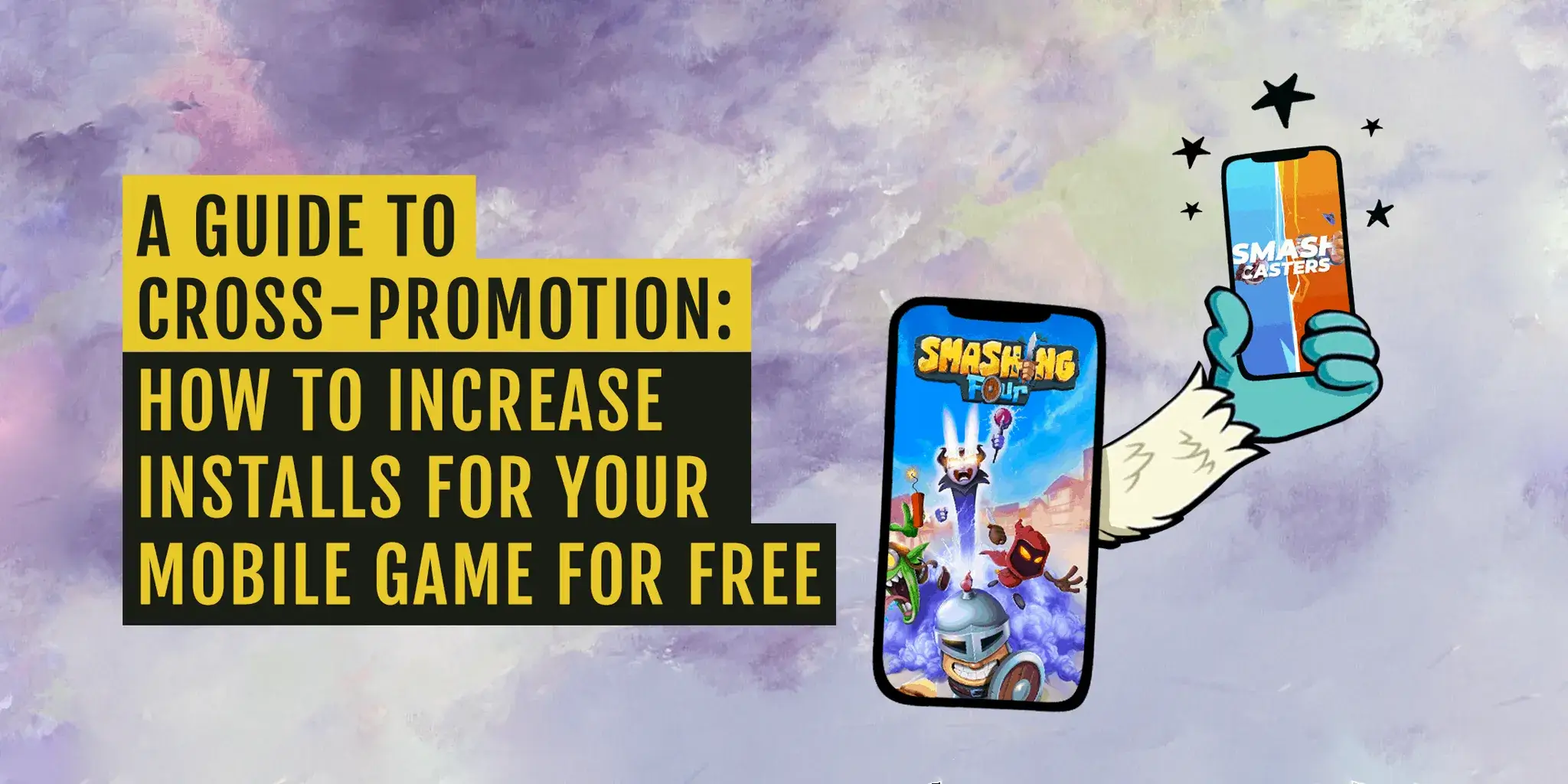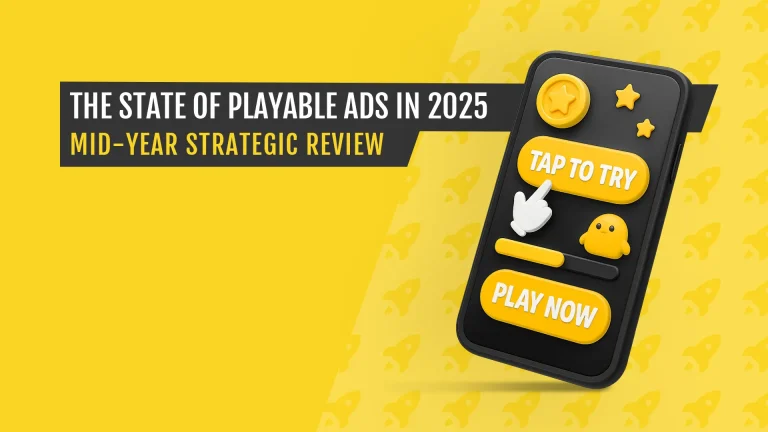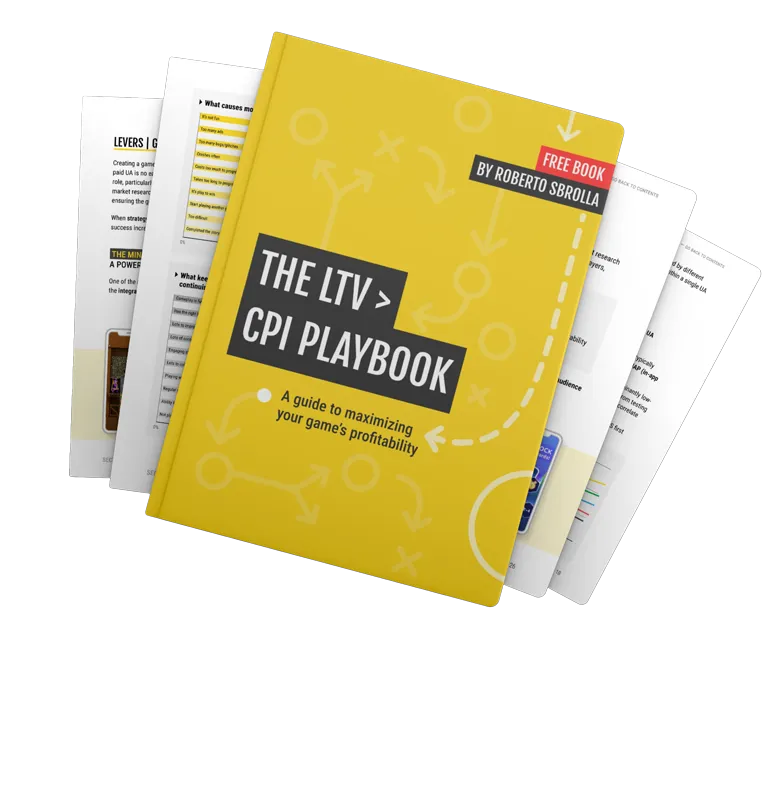To learn more about industry insights and best practices, like how cross-promotion works for mobile game, sign up for the AppAgent newsletter here.
In this article, I have summarized my learnings from running cross-promotion strategies at games publisher EA for two years. During that time, I worked with four games studios and successfully promoted 12 games. The result: two successful game launches, a constant stream of new installs and an increase in revenue year-on-year. Here’s how I did it.
Introduction to Mobile Game Cross-Promotion
At some point, users will churn from your mobile game. Whether it’s because they get bored, it becomes too difficult, or they simply run out of time to play it. As a publisher, you can use internal data and see where and when the majority of your users are churning and use this insight to try and understand why they are leaving.
At that moment, you have three options depending on your resources:
- Send users a push notification to encourage them back to the game;
- Update your game so that users stop leaving; or
- Or start cross-promoting.
Cross-promotion is the process of promoting adverts of your mobile game within your other games. The main goal of cross-promotion is to keep users playing games produced by your company. This should maintain and increase your overall revenue.
🔗 Resource Link: See the Clash Royale ASO Case Study for real-world inspiration on how visual updates and in-app assets like icons and creatives affect performance.
Here is an example of a four-stage cross-promotion user journey:
A diagram showing user acquisition, retention, and monetization pathways via cross-promotion (aligns with ACE Framework).
If you have multiple published games, you can leverage cross-promotion to retain churn-prone users within your portfolio.
Here is an example of a four-stage cross-promotion user journey:

If you have published multiple games, you can leverage cross-promotion opportunities to keep users playing your games.
Quick Overview on How to get Started Cross-Promotion
- You need at least one dedicated person to lead on cross-promotion campaigns.
- Set priorities: analyse which games are generating the most revenue and which games have a large-enough audience to make advertising a realistic proposition.
- Select or create tools for tracking and campaign management.
- Choose creatives: have at least four to begin with.
- Implement the campaigns and optimize them.
- Measure the impact of all cross-promotion strategies.
📘 Related Resource: If you’re planning your first campaign, check out the 2025 UGC Ad Production Guide–its frameworks can be adapted for internal creative coordination and execution.
1. Getting Started with Cross-Promotion Campaigns
Ideally, you should have a dedicated designer to develop specific creatives and a strategist to help with setting campaign objectives. Also, to manage any potential difficulties with the external tools (mobile attribution, campaign management, lifecycle tools etc.). However, all of these tasks can be undertaken by just one person if required.
🧠 Strategy Tip: Use the How to Develop a Creative Strategy Deck to align your internal teams on positioning, timing, and testing goals for cross-promotion campaigns.
If resources are limited, a single marketer can manage execution, but it helps to have design and data support.
Note: When speaking about ad creatives, you can get inspired by an ACE framework for efficient ad production here.
2. Prioritizing What Games to Promote and Where
Look at two perspectives:
- Promoted game: Start with titles generating the most revenue or those with big upcoming updates.
- Source game: Carefully choose where to promote; avoid migrating high-value players unless necessary.
Segment users into spenders vs. non-spenders. Promote only to non-spenders to preserve source game monetization.
⚖️ Benchmark Tip: Games with at least 10k DAU are ideal for cross-promotion. To validate performance post-launch, apply our App Stores A/B Testing Loop to test in-game messages or creatives.
Affinity also matters: promote match-3 games in other match-3s, strategy in strategy. Consider gender, gameplay tempo, and art style for tighter alignment.
3. Using a Mobile Attribution Tool to Track Performance
If you’re using paid UA, it’s likely that you are already using a 3rd party attribution tool. Make sure the games support it and that the user lifecycle management is integrated within it. You can read more about tracking tools (Mobile Measurement Partners, MMPs) in our in-depth guide here.
Metrics to track: clicks, impressions, installs, conversion rate, D1-D30 revenue.
As a side note, deciding between D1-D30 revenue attribution should be based on game mechanics and how fast players start spending on your game. Another thing to consider is that after D30, you must attribute the revenue to the promoted mobile game mechanics and not cross-promotion.
📊 Related Read: Unsure if your MMP setup supports internal transfers? Read Choose the Right Attribution Partner for Your App to compare capabilities and integrations.
4. Campaign Management Tools for Mobile Game Cross-Promotion
You should either develop a solution internally or use an off-the-shelf user lifecycle management tool. We recommend that you use Upsight as it has a simple interface, supports multiple types of ads, has A/B testing function and user segmentation capabilities.
a) Internal tool
Using an internal tool involves no additional costs as your existing developers can take care of it. You can update and customize it as you need. However, there is a risk that you may be slow to respond to changes, depending on the company’s policies and how many approvals you need for making alterations.
Realistically, you need at least two developers fully dedicated to the project (in case one can’t work unexpectedly, and you still need technical support for your tool). They are responsible for building it, keeping it updated and ensuring that there are no technical problems. Please note that depending on the tool, you may have issues with other game studios integrating it. This is the case for big companies that have acquired game studios and are implementing the same tool across the board.
⚙️ Internal Build Tip: If building in-house, reference the Mobile Ad Iterations Loop to create your own testing framework for creatives shown in cross-promotion placements.
b) Paid tool
There is a lower chance of experiencing technical difficulties when using a tried-and-tested paid-for tool. As well as monitoring, they can help improve your campaigns, using the data to make recommendations for better optimization of your campaigns, user segmentation and more. Most commercially available tools can integrate with all games currently available. The downside is the ongoing cost of the license and the investment of time and resources in training your staff to learn how to use a new piece of software.
5. Developing Creatives for Promoting your Games Portfolio
A video for Covet fashion mobile game, made by AppAgent, could be used for cross-promotion with Design Home as both games share the same audience.
The simplest option is to re-use some of your existing paid UA adverts. Industry best-practice is to start with 4-5 creative initially and see which one performs best. Once you know which adverts generate the highest number of installs, you can begin iterating on it.
You can choose to use either static interstitial adverts, native adverts or a combination of both. From our experience, native ads perform better in delivering user quality and revenue, but static interstitials provide a higher overall volume.
For videos, re-use your existing paid UA videos and ensure users remain engaged enough to watch the entire video by offering campaign rewards.
🎨 Creative Tip: Use the Mobile Video Ads Specifications Cheat Sheet to ensure compatibility across devices and avoid performance issues caused by incorrect formatting.
Add rewards or bonuses to improve video completion rates.
6. Mobile Game Cross-Promotion Campaigns Management
So, you’ve ensured that tracking is in place, your users are segmented, you have enough creatives in place, and you have determined a list of what games to promote and where. Now it’s time to get into the details of user-data.
a) User segmentation
Before jumping into user profiling and behaviour based segmentation, split your audience into two or three segments and build up additional audiences from there. By segmenting the users into a small number of audiences, you can generate impactful but straightforward insights. This information makes the process of building tests simpler, enabling you to validate your segmentation hypotheses.
A simple way to do this is to classify users by revenue, splitting them into spenders and non-spenders. Then further on, target spenders with significantly fewer ads compared to non-spenders. For example, cap your spenders’ campaigns at three impressions per week and your non-spenders at ten. In this way, you avoid losing high-revenue users to other less monetizing games.
Depending on your audience size, we recommend further targeting users by country, using local ads to engage them. Ensure that you exclude those users that have already installed the promoted game from your list.
b) Campaign optimization
Deciding campaign cadence requires an investment in testing, and is also dependent on your resources. Consider the following factors when deciding on how to optimize your campaign:

Testing: Test how fast installs, conversion rate and CTR decrease over time for the same campaign. Let’s take one simple example: you decide to promote your match-3 game within another match-3 title. You begin the campaign with two creatives. In the first week, you can measure the increase in installs to give you an idea of the CTR and CVR. Leave the campaign running for another two weeks to see how these metrics change over time. Based on the data, decide how often you need to update the campaigns.

Resources: Ideally, campaigns should be changed on a weekly basis. However, at EA during times when there weren’t the resources to do that, we would add four creatives in rotation and have a different one every week while promoting the same game. The metrics would decrease, but not as much as they would have if we had continued to use the same creative throughout.

Creatives optimization: On channels such as Facebook and Google Ads, creatives take about one month until they begin to lose their potency. In cross-promotion, as the user base is smaller, and your targeting capabilities are limited, the performance of each creative decreases more quickly. Because of this, you must change creatives every week to achieve the best performance. Another option is to start with 4-5 creatives and change the priority in which each one is shown from one week to another.

Revenue optimization: It’s crucial to optimize your campaigns based on the revenue generated by the game, country and the creatives you are using. Monitor the revenue for short periods of time (D1 – D30) but consider factors that may affect installs, including seasonality (more on this below).
📈 Revenue Tool: For better forecasting, plug your data into the Retention to LTV Calculator / Predictor to compare monetization between source and destination games.
7. Measuring the Impact of Cross-Promotion On Mobile Game
- DAU of a source game: Monitor how much the DAUs are decreasing since beginning cross-promotion and compare them to a longer period (between 3-6 months) to make sure any increases aren’t due to seasonality.
- Cross-promotion vs paid UA: Measure the impact of cross-promotion on game installs and revenue generation. Is cross-promotion a viable strategy to scale your games, or is it wasting company resources that could be better spent elsewhere? Measuring this is highly dependent on your portfolio of games and how much resource you are investing.
- LTV of your own game vs another game: Measure how much revenue your company receives by promoting your game as opposed to offering that ad space to another game through an SSP (Supply Side Platform).
🔍 Tool Tip: The User Acquisition Viability Calculator helps evaluate whether cross-promotion is scaling as efficiently as paid user acquisition.
Key Takeaways
Cross-promotion can be a good source of free new installs and added revenue for your company. However, it can also affect the source game and, in time, exponentially decrease audiences.
Getting everything in place before starting cross-promotion may be time-consuming, but once that is done, campaign optimization and creatives require minimal resources.









